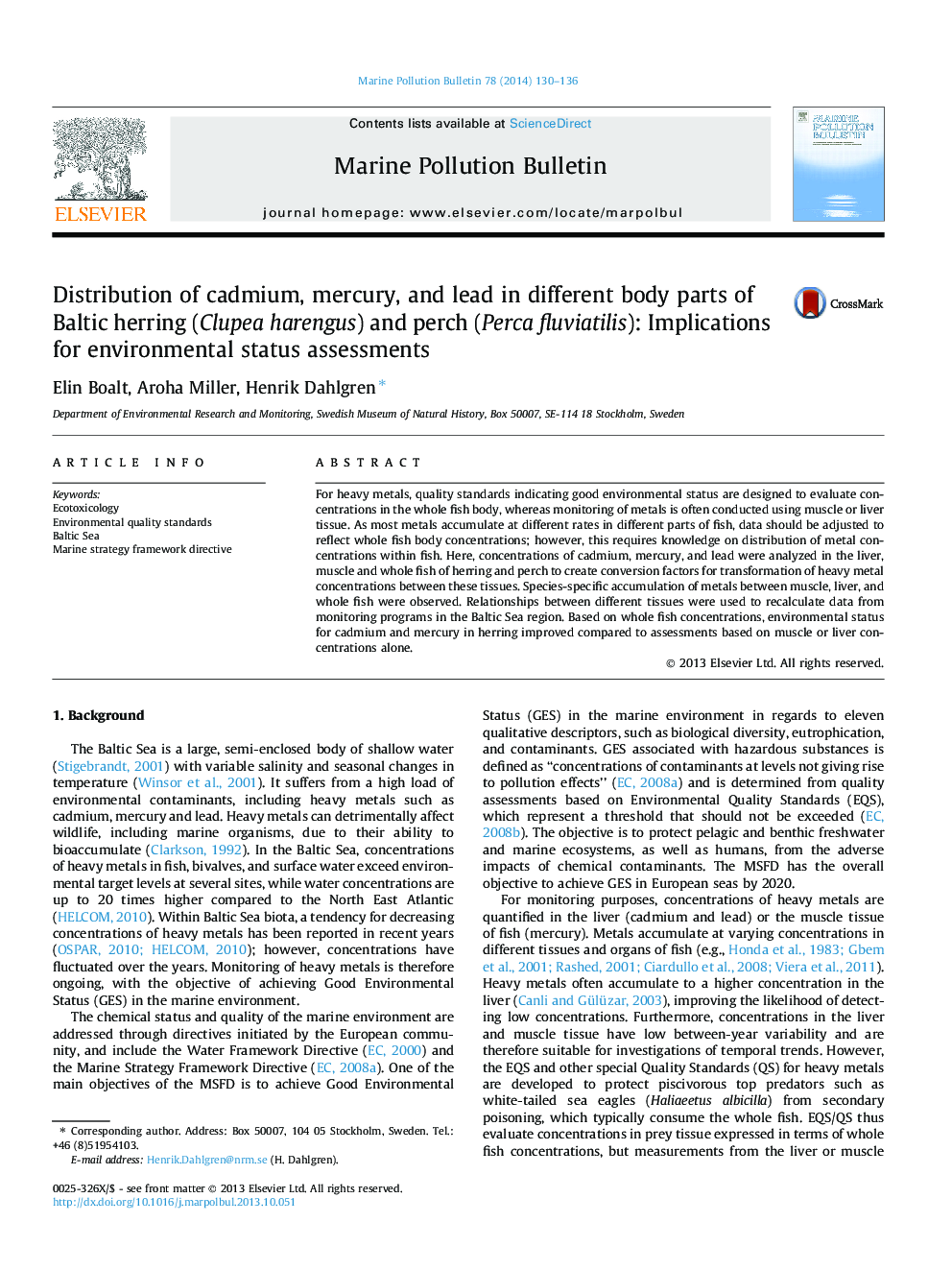| Article ID | Journal | Published Year | Pages | File Type |
|---|---|---|---|---|
| 6359216 | Marine Pollution Bulletin | 2014 | 7 Pages |
â¢Good Environmental Status (GES) is assessed based on whole fish body concentrations.â¢Heavy metals were analyzed in different parts of herring and perch body.â¢Conversion factors between these tissues were calculated and applied to assess GES.â¢GES in herring improved compared to assessments using muscle/liver concentrations.â¢Status assessments must reflect whole fish concentrations, not only sampled tissues.
For heavy metals, quality standards indicating good environmental status are designed to evaluate concentrations in the whole fish body, whereas monitoring of metals is often conducted using muscle or liver tissue. As most metals accumulate at different rates in different parts of fish, data should be adjusted to reflect whole fish body concentrations; however, this requires knowledge on distribution of metal concentrations within fish. Here, concentrations of cadmium, mercury, and lead were analyzed in the liver, muscle and whole fish of herring and perch to create conversion factors for transformation of heavy metal concentrations between these tissues. Species-specific accumulation of metals between muscle, liver, and whole fish were observed. Relationships between different tissues were used to recalculate data from monitoring programs in the Baltic Sea region. Based on whole fish concentrations, environmental status for cadmium and mercury in herring improved compared to assessments based on muscle or liver concentrations alone.
